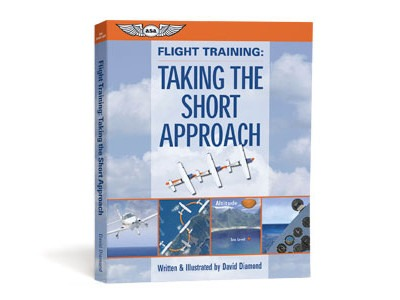
Flight Training: Taking the Short Approach" wurde als Lehrbuch für die Grundlagen der Luftfahrt geschrieben und bietet eine Einführung in den gesamten Schulungsprozess. Da Erstsemesterstudenten die Grundlagen erlernen sollen, werden Senioren immer auf die Ratschläge und Empfehlungen von David Diamond zurückgreifen.
 Keine Verfügbarkeit
(0 St.)
Keine Verfügbarkeit
(0 St.)
 Paypal, Bezahlung in bar, Zahlung per Banküberweisung, Paynow (BLIK, przelew bankowy, płatność kartą)
Paypal, Bezahlung in bar, Zahlung per Banküberweisung, Paynow (BLIK, przelew bankowy, płatność kartą)
![]()
![]()
![]()

Starting by examining the initial decision to embark on flight lessons, short-term training: the comprehensive focus on aviation training from the perspective of exploration, rather than a curriculum. Aviation is a circular subject that lacks a perfect entry point for learning. There isn't an aviation aspect that wouldn't require at least an understanding of another aviation concept. The short approach eliminates the traditional approach of tackling aviation topics one by one, allowing the reader to engage with the subject from the very beginning, supported by the author's conversational style and friendly humor in sharing his experiences. This book is the perfect first read for anyone looking to start flight training; consider it "Flight Training 101."
Diamond doesn't assume any aviation knowledge from the reader. His book is an ideal guide for student pilots, covering topics such as the people who fly, the process of learning to fly—including financial considerations, health requirements, time commitments, school and instructor options, and the associated tests—as well as the privileges and limitations of a pilot certificate. From there, the author dispels common concerns related to learning to fly, such as engine failures, mid-air collisions, and weather conditions. The airplane is covered with an orientation to the control elements and instruments, showing the maneuvers students will undertake within the pilot program. The book concludes with a discussion of gadgets that can aid in training, which ones may hinder the learning process, and which are necessary not just for the "cool" factor.
Since the author is also an excellent illustrator, the text is accompanied by some of the best full-color and three-dimensional graphics found in any airbook—readers will have a solid "mind's eye view" of the flight training process. This will enable them to enter the cockpit program fully prepared, knowing precisely what needs to happen to obtain a license, understanding what to expect, and making the right decisions so as not to waste time on the airfield or in the airplane... "Taking the Short Approach to Flight Training."